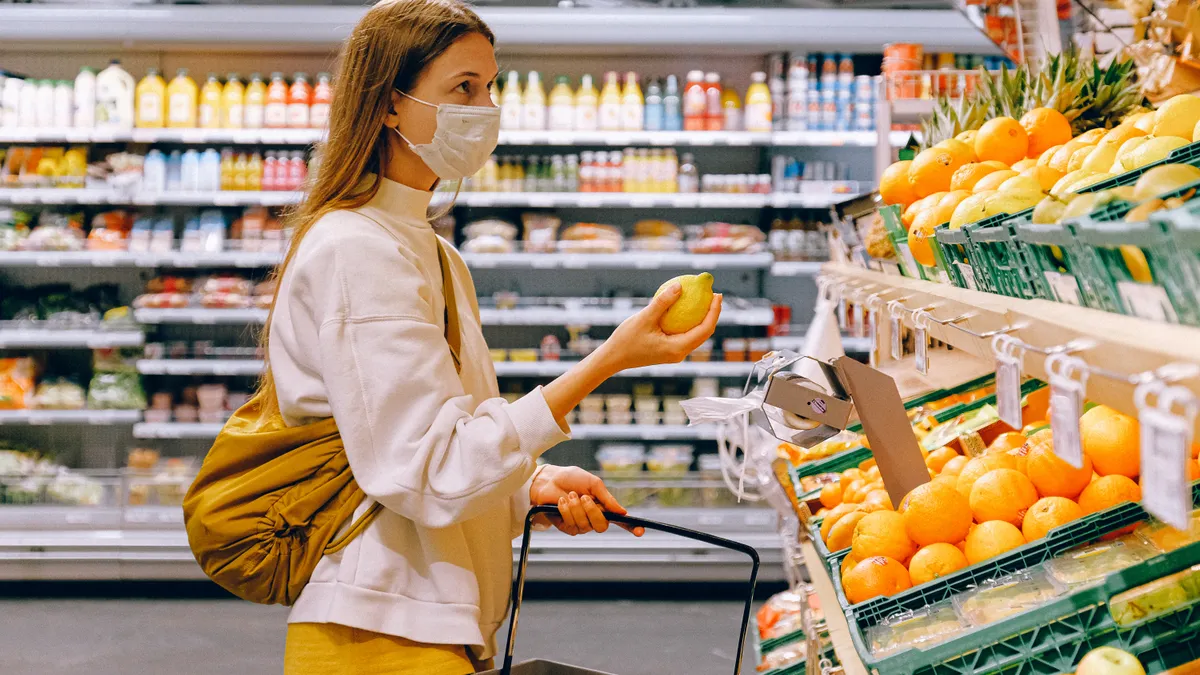Dive Brief:
- Worry among U.S. consumers that they could contract COVID-19 while grocery shopping is increasing, but mask usage and hand-washing are trending downward, according to Dunnhumby’s latest Consumer Pulse Survey, released Thursday. The firm’s “Worry Index,” a measure of people’s concern about the virus, is at 32% — its highest point since the pandemic began.
- Asked which grocery retailer offers the best value, 35% of U.S. respondents cited Walmart. Aldi and Kroger were next on the list, at 9% and 7%, respectively.
- Despite their concerns about getting sick, shoppers are becoming less likely to indicate they make fewer trips to grocery stores or shop at a smaller number of retailers now than earlier in the pandemic, suggesting they've grown used to the risks of in-store shopping.
Dive Insight:
Consumers may be reacting to the threat posed by the coronavirus less vigorously than they did when the pandemic broke out, but their concerns are nonetheless continuing to affect people’s overall shopping habits, the findings from Dunnhumby indicate.
The number of shopping trips people reported making to stores and online during the past week fell to 4.6 in November from 5.4 in September even as shoppers became less likely to say they had cut back on shopping trips.
About a third of the U.S. respondents to the survey, which the research firm conducted online between Nov. 20 and Nov. 25 with groups of about 400 respondents in each of 21 countries, plan to buy food for the holidays online.
Online purchases accounted for 29% of shopping trips respondents in the United States said they made in November. U.S. consumers are also more satisfied with e-commerce channels than they are with the experiences they have in brick-and-mortar stores.
In the U.S., 42% of respondents said they are spending more on groceries now than they were before the pandemic began — similar to what Dunnhumby saw in late September when the survey was last conducted. In addition, 43% said they sense that food prices have gone up — a figure that is in line with the proportion who felt the same way in September.
Meanwhile, the percentage of consumers indicating their personal finances have weakened is on the rise and, at 54%, is now at its highest point since March, when 45% of respondents said they felt that way about their economic circumstances. Perhaps because of those factors, 25% of respondents said they intend to spend less on food for the holidays than they did last year.











